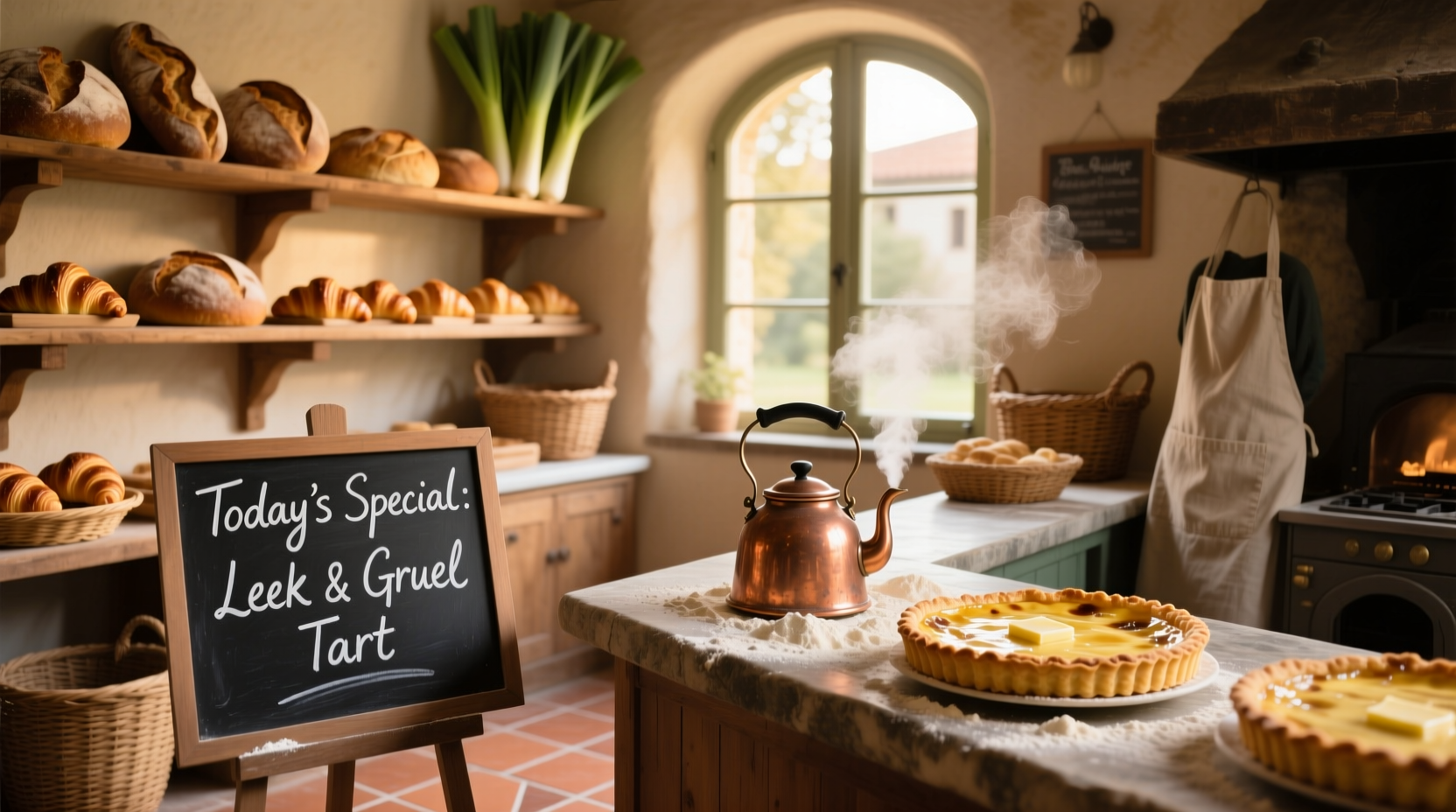Discover how to transform this humble allium into bakery-worthy creations that elevate your savory baking game. Whether you're a home cook or professional chef, mastering leek-based baked goods opens doors to sophisticated flavors that balance earthiness with subtle sweetness.
The Science Behind Successful Leek Baking
Leeks (Allium ampeloprasum) contain less sulfur than onions, creating a milder flavor profile perfect for delicate pastries. When cooked properly, their natural sugars caramelize beautifully, adding complexity without overwhelming other ingredients. The key lies in understanding their unique cellular structure—leeks contain more water than onions, requiring specific preparation techniques to prevent soggy pastry bottoms.
| Leek Variety | Best For | Preparation Tip |
|---|---|---|
| Spring Leeks | Quiches & Tarts | Sauté 5-7 minutes until translucent |
| Winter Leeks | Turnovers & Pies | Cook 10-12 minutes to soften fibrous layers |
| Wild Leeks (Ramps) | Specialty Breads | Add raw to dough for pungent flavor bursts |
Essential Preparation Techniques for Perfect Leek Pastries
Skipping proper leek preparation guarantees disappointing results. Follow these chef-tested methods to maximize flavor while preventing common baking failures:
Cleaning Method That Prevents Soggy Bottoms
Leeks trap sand between their layers. Submerge cut leeks in cold water, swishing vigorously for 30 seconds. Drain through a fine-mesh sieve, repeating until water runs clear. Never skip this step—residual grit ruins delicate pastry textures. For professional results, spread cleaned leeks on paper towels for 15 minutes before cooking to remove excess moisture.
Sautéing Secrets for Maximum Flavor Development
"Many home bakers undercook leeks, leaving them with an unpleasant raw bite," explains Antonio Rodriguez, culinary expert with Michelin-starred kitchen experience. "Cook them slowly over medium-low heat with butter until they reach a jam-like consistency—this concentrates flavor while removing excess water that would otherwise steam your pastry instead of baking it."

Top 3 Leek-Based Baked Goods & Pro Techniques
Classic French Leek Tart (Tarte aux Poireaux)
This elegant preparation showcases leeks' versatility. For authentic results:
- Use a pâte brisée crust blind-baked at 375°F (190°C) for 15 minutes
- Combine 2 cups cooked leeks with 3 eggs, 1 cup crème fraîche, and ½ cup Gruyère
- Bake at 350°F (175°C) until custard sets (25-30 minutes)
Pro tip: Add a pinch of nutmeg to enhance the leeks' natural sweetness without overpowering the dish.
Scottish Leek and Cheese Turnovers
These handheld delights trace back to 18th century Scottish bakeries. Modern chefs achieve flakier results by:
- Folding puff pastry around a mixture of leeks cooked in bacon fat and mature cheddar
- Brushing with egg wash mixed with a teaspoon of smoked paprika
- Baking at 400°F (200°C) for 20-22 minutes until golden brown
According to culinary historians at the University of Edinburgh's School of History, Archaeology and Anthropology, these turnovers were originally created as portable meals for textile workers in Scotland's industrial revolution.
Eastern European Leek and Dill Braid
This yeasted bread combines sweet leeks with fresh dill in a braided loaf. Key success factors:
- Incorporate cooled leeks into enriched dough after first rise
- Add fresh dill just before shaping to preserve vibrant flavor
- Bake at 375°F (190°C) until internal temperature reaches 190°F (88°C)
Avoid These 3 Common Leek Baking Mistakes
Mistake #1: Using Raw Leeks in Wet Fillings
Raw leeks release too much moisture during baking, creating a soggy mess. Always pre-cook leeks until they reach jam-like consistency, especially for custard-based preparations. The USDA Food Safety and Inspection Service confirms that cooking vegetables like leeks to 165°F (74°C) ensures optimal texture and food safety in baked goods.
Mistake #2: Overlooking Seasonal Variations
Spring leeks (thinner stalks) work best in delicate pastries, while winter leeks (thicker, woodier stalks) require longer cooking. Using winter leeks without extended cooking leaves unpleasant fibrous textures. The Royal Horticultural Society notes that leek varieties contain different cellulose levels depending on harvest season, directly affecting baking outcomes.
Mistake #3: Pairing With Overpowering Ingredients
Leeks' subtle flavor disappears when paired with strong cheeses or cured meats. Balance is key—use mild cheddar instead of blue cheese, and omit bacon when leeks should shine as the star ingredient.
Seasonal Guide to Leek Baking
Understanding leek seasonality transforms your baking results. In North America, peak leek season runs from October through March, when cold temperatures increase natural sugar content. During summer months, look for baby leeks which have milder flavor suitable for delicate pastries. The Food and Agriculture Organization of the United Nations reports that properly stored winter leeks contain up to 25% more natural sugars than summer varieties, directly impacting caramelization during baking.
Perfect Pairings: What to Serve With Leek Baked Goods
Complement your creations with these chef-recommended pairings:
- Light-bodied white wines: Picpoul de Pinet cuts through richness
- Simple green salads: Arugula with lemon vinaigrette balances earthiness
- Creamy soups: Potato-leek soup creates harmonious flavor echoes











 浙公网安备
33010002000092号
浙公网安备
33010002000092号 浙B2-20120091-4
浙B2-20120091-4